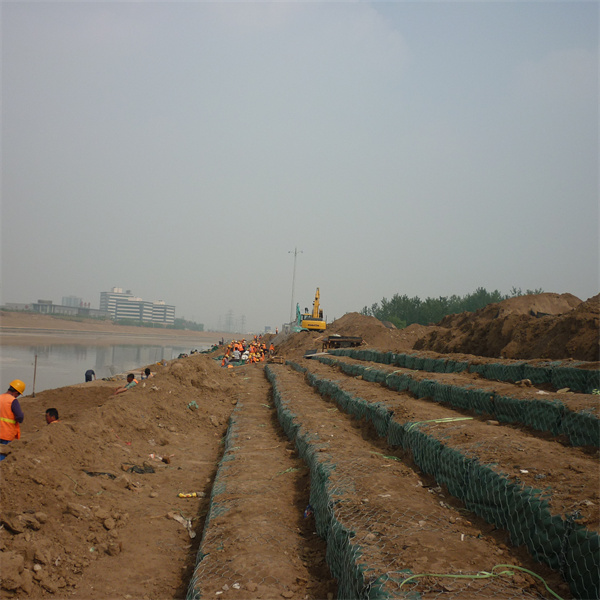Dec . 12, 2024 04:17 Back to list
gabion retaining wall section supplier
The Growing Popularity of Gabion Retaining Walls A Supplier's Perspective
In the world of civil engineering and landscape architecture, the use of gabion retaining walls has gained significant traction over recent years. These structures, made from wire mesh filled with stones or other materials, offer a practical and aesthetically pleasing solution for various applications. As a supplier of gabion retaining wall sections, it is essential to understand the advantages, installation processes, and considerations that influence the choice of gabion walls over traditional retaining methods.
Advantages of Gabion Retaining Walls
One of the most compelling reasons for using gabion retaining walls is their versatility. These structures can be utilized in diverse settings, from residential gardens to large commercial projects. The inherent strength of gabions provides excellent stability for slopes, preventing soil erosion and minimizing the risk of landslides. Moreover, their open structure allows for efficient drainage, making them an effective solution in areas prone to flooding.
Another significant advantage is the aesthetic appeal. Gabion walls can blend seamlessly with natural surroundings when filled with locally sourced stones or decorative materials. This feature enables landscape architects to create visually striking structures that enhance the beauty of the environment rather than detract from it. Additionally, the natural stone finish can complement various architectural styles, making gabion walls an attractive option for homebuilders and developers.
Environmental considerations also play a crucial role in the growing popularity of gabion walls. With a rising awareness of sustainability and eco-friendly practices, gabions made from natural materials present a greener alternative to traditional concrete and brick walls. They can utilize recycled materials, and their permeable design promotes healthy soil and water management, benefiting the ecosystem.
Installation Process
As a supplier, it is vital to communicate the installation process clearly to clients. Building a gabion retaining wall involves a few key steps
1. Site Preparation Proper site assessment and preparation are crucial. This step involves clearing the area of any debris, vegetation, or loose soil. A level foundation is essential for ensuring stability.
2. Foundation A solid, compacted base is necessary. Depending on the height and load of the wall, a concrete or gravel foundation may be required to help distribute the weight evenly.
gabion retaining wall section supplier

3. Assembly of Gabion Baskets The baskets, typically made from galvanized wire, should be assembled on-site or delivered pre-constructed. They are then positioned according to the wall design.
4. Filling Once the baskets are correctly placed and secured, filling them with stones or other materials begins. The choice of fill material can greatly influence both stability and aesthetics.
5. Capping To finish the wall, a cap may be added to the top of the gabions, providing additional stability and a polished look.
Key Considerations
When offering gabion retaining wall sections to clients, several considerations should be addressed
- Design Specifications Understanding the specific height, width, and load-bearing requirements is crucial. Suppliers need to provide options tailored to individual projects, and technical guidance for optimal performance.
- Material Choices The choice of wire mesh and fill materials affects both durability and aesthetics. High-quality, corrosion-resistant wire can significantly enhance the longevity of the structure, while fill materials can be customized to match or complement the surrounding landscape.
- Regulatory Compliance Suppliers must be aware of local building codes and environmental regulations. It's essential to provide clients with accurate information regarding permits and approvals necessary for construction.
Conclusion
Gabion retaining walls are a modern solution that combines functionality with aesthetic appeal, making them an increasingly popular choice in various engineering and landscaping projects. As a supplier of gabion wall sections, understanding the benefits, installation processes, and key considerations can significantly enhance customer satisfaction and project success. By promoting the versatility and sustainability of gabion walls, suppliers can position themselves at the forefront of a growing market, catering to the evolving needs of clients who prioritize quality, durability, and visual impact in their construction projects.
-
Transform Your Outdoor Space with Gabion Fences
NewsApr.01,2025
-
The Versatility of Gabion Baskets for Your Projects
NewsApr.01,2025
-
The Importance of a Protective Net Sleeve for Your Valuable Investments
NewsApr.01,2025
-
The Benefits of Gabion Walls for Your Next Project
NewsApr.01,2025
-
Gabion Baskets
NewsApr.01,2025
-
Discover The Benefits of Protective Nets
NewsApr.01,2025
-
The Essential Guide to Gabion Supplies
NewsMar.12,2025






